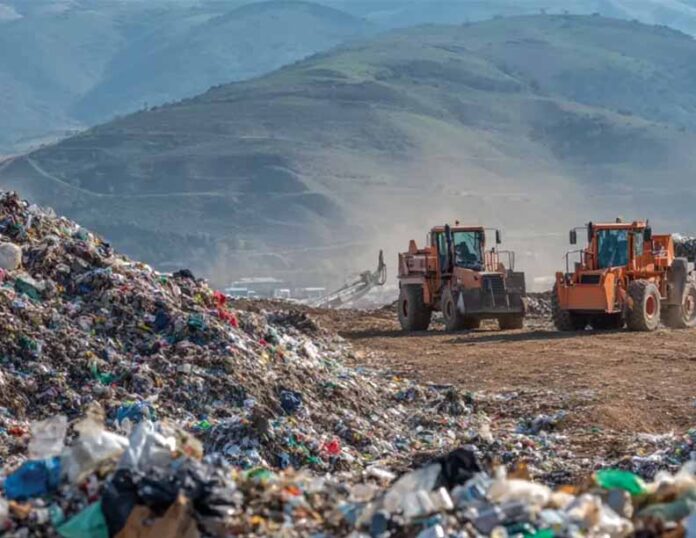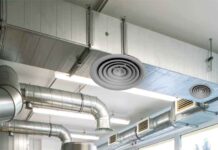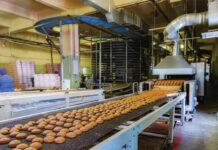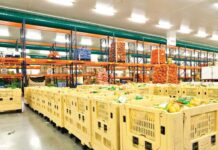
In WtE plants, managing heat is not an auxiliary task. It is central to stable operations, efficient energy recovery, and safe environmental performance. Even well-designed combustion or power generation systems without a robust cooling solution can lead to lowering efficiency, costly downtime, or environmental non-compliance.
The Heat Challenge
The biggest source of heat in WtE plants is the combustion chamber, where solid waste is burned at temperatures above 850°C. This process produces heat and the thermal load increases and it needs to be controlled with care to maintain nonstop operation and meet emission standards.
Flue gases exiting the combustion zone can exceed 1,000°C. So, it needs to be cooled before entering air pollution control equipment as high temperature flue gases can damage machinery, lower pollution removal efficiency, and create unsafe conditions.
For power generation side the steam turbine cycle needs effective condensation of exhaust steam. Even minute inefficiency in condensing and cooling directly reduces power output and plant economics.
So, to summarise, it is critical to manage the heat at various points of the WtE process for:
- Prevention of equipment degradation.
- Regulatory compliance.
- Maximum power generation from process heat.
- Ensuring reliable and continuous operation.
Cooling Systems and Their Function
A range of cooling systems are used in both WtE and incineration plants. These are designed and selected based on the purpose.
- Flue Gas Cooling Systems: The hot flue gases generated from the process needs to be cooled to a level that the downstream equipment can handle. Usually these flue gases enter scrubbers, bag filters, or electrostatic precipitators, quencher, spray coolers, or heat exchangers. This step ensures both protection of equipment and efficient removal of pollutant as many air pollution control devices operate best within specific temperature.
- Cooling Towers and Condensers: For power generation the steam from the process once expanded through the turbine, must be condensed back into water to complete the cycle. Cooling towers and surface condensers are used for this purpose. This is critical any change in condenser performance directly reduces turbine efficiency and power generation.
- Chillers and Auxiliary Cooling: The other process plants rely on chillers and auxiliary systems to maintain safe operating conditions for electrical rooms, control systems, and rotating equipment. Unlike the above systems these cannot handle the higher thermal loads but are important to ensure the overall plant safety and reliability.
Operational Challenges
Although the concept may seem simple but designing and operating cooling systems for WtE plants is far from straightforward. Since all plants are not alike and each process plant has different nature of waste that is used as fuel, also operating conditions are harsh, making the process challenging:
- High Temperatures and Fluctuating Loads: In industries the waste composition varies as it is dependent on a lot of processing factors. This daily fluctuations can result in uneven combustion characteristics and fluctuating heat loads. So, cooling systems must be incorporated to adapt to rapid changes without compromising stability.
- Corrosion and Scaling: The flue gases that contain acidic components such as HCl and SO₂, can corrode heat exchangers and ducts. On the water side, scaling, fouling, and microbial growth reduce efficiency.
- High Water and Energy Consumption: Traditional open-loop cooling towers use large amounts of water, which is a serious issue in water-scarce regions. Cooling systems also consume significant energy, lowering net plant efficiency.
Sustainable and Efficient Solutions
With sustainability becoming a global priority, WtE operators must cut down on water and energy use while maintaining reliability. Innovative approaches to cooling are helping achieve these goals.
- Automation and PLC Control: The advanced PLC-based control systems are equipped with sensors that enable real time monitoring and control of cooling operations. Thus, by adjusting flow rates, spray patterns, and fan speeds according to the load conditions we can optimise plant performance and cut unnecessary energy use.
- Closed-Loop Cooling Systems: Closed-loop systems reduce water consumption as compared to conventional open-loop towers. Recirculation and reuse of water within a sealed system minimise scaling and biological fouling, significantly reduce the requirement for chemical treatment. This type of system would be valuable in water deficient regions or urban cities dealing with water shortage.
Energy Recovery from Cooling Systems
In the long run integrating energy recovery technologies into their cooling systems when designing the plants can make the process energy efficient. For example, the heat recovered from flue gas cooling can be used to preheat combustion air or process that needs heat. Thus, no additional fuel is required for heating or pre-heating. Also, hybrid cooling towers with heat recovery loops can provide additional energy efficiency.
Material and Design Innovations
Based on the process conditions, we need to specifically select materials that are corrosion-resistant, coatings, and modular design helps in extending equipment life and reducing maintenance downtime. Also, routine maintenance ensures that plant works in best condition and reduces the requirement for sudden repairs.
Expert-Engineered Solutions
The most effective cooling strategies are customised for each plant, considering its waste profile, climate, and energy goals. Engineering firms like Mc Clelland Engineers Pvt. Ltd., design and implement cooling systems as per the process requirement ensuing the process is automated with energy recovery features helping to align with long-term sustainability targets.
Conclusion
In both Waste-to-Energy and incineration plants, cooling systems are not just play a supporting role but it plays a more important role of improving the plants efficiency, compliance, and profitability. A well-designed and well-maintained cooling infrastructure is needed for the process to run smoothly right from flue gas quenching to turbine condensation.
Although there are challenges like fluctuation in heat loads, corrosive environments, and high resource consumption, these can be tackled with smart automation, closed-loop designs, and energy recovery strategies. With rapid advancement in technology, it is now possible to design plants achieve both operational excellence and sustainability.
Now the environmental regulations are stringent and companies need to abide by it. Hence, the role of efficient cooling solutions and its importance continues to grow. Thus, adopting advanced, engineered approaches from experienced professionals like Mc Clelland Engineers, companies and plant operators ensure that their plant runs economically competitive and environmentally responsible.

Asiya Muhammed Kochuveettil, MRSB is associated with Mc Clelland Engineers Pvt. Ltd., a leading provider of hazardous waste incineration systems in India for the chemical, agrochemical, and pharmaceutical sectors etc. She has a background in pharmaceutical research and is a Member of the Royal Society of Biology (UK).








